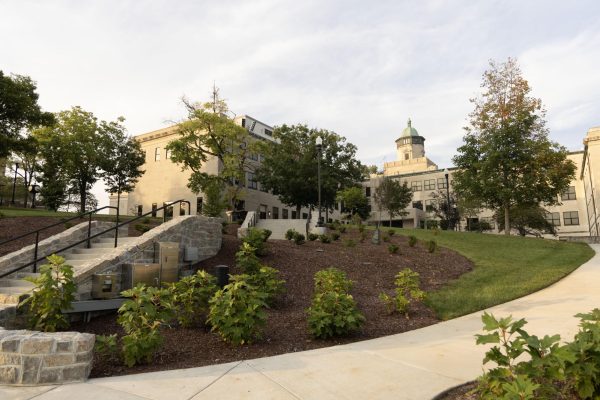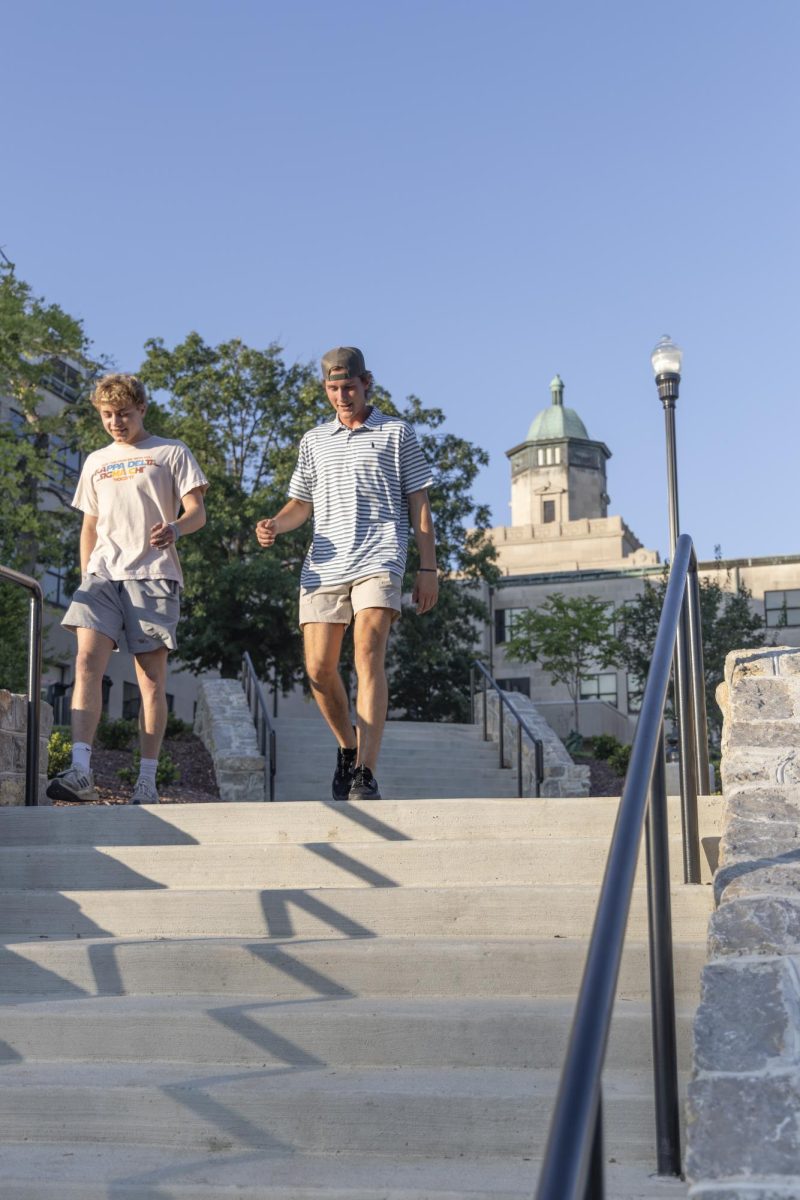Students can expect to see many changes on the Hill this semester, with various construction projects completed and new ones breaking ground.
HISTORY OF THE HILL
The Hill became home to WKU in 1910 with the construction of Van Meter Hall. The hill of campus can be seen as a distinguishing feature, standing out in comparison to other universities.
In the beginning, WKU focused itself on the top of the hill, with additions of new buildings which expanded its programs and facilities, according to the WKU Campus Master Plan.
Beginning in the 1960s, campus began to spread down the hill and into the valley, across State Street to the science campus. This growth continued through the 70s, 80s and 90s, eventually becoming the campus students see today.
The WKU Campus Master Plan for 2021-2031, which began in 2020, out- lines campus construction plans, future plans going past 2031 and includes building and site analyses. It serves as the basis in planning for construction efforts around campus.
The most recent project of this plan was the Com- mons at Helm Library, completed in April 2022, which reimagined the former Helm Library into a student-centered study and dining location. The completion of the Commons also came with the removal of the former Garrett Conference Center, which had been on campus since 1951.
Bryan Russell, chief facilities officer at WKU, said the plan for the Commons was to reinvision the facility as the welcome center, or a lighthouse for WKU.
HILLTOP PLANNING STUDY
One of the projects on campus that has been a work in progress is the Hilltop Planning Study, which reached completion at the start of this semester. This area is located where Garrett Conference Center was formerly located before it was torn down.
With the demolition of Garrett Conference Center and the construction of the Hilltop, the total cost for the project was roughly $5 million, Russell said.
With the newly completed Commons, the Hilltop location goes hand in hand. The Hilltop Planning Study “celebrates the history of the Hill and the original campus plan,” the WKU Campus Master Plan said.
The construction of this area had a number of main objectives. The plan evaluated and assessed both pedestrian and vehicle circulation opportunities, as well as provided new landscaping and new pathways to Cherry Hall and the top of the hill.
“It’s giving us the green space, and it’s going to be heavily wifi connected for our students,” Russell said. “It’s going to be a gathering space … that area that we can move in and out of for the university.”
There are two main features of the Hilltop: the rotunda
and the fountain. Additionally, the Hilltop was created to be accessible and barrier free, taking out steps when unnecessary and adding ADA accessible crossings, Russell said.
The Hilltop Planning Study strikes a resemblance to the original plans for the university, which included buildings in a circular formation and large green spaces between.
“The ultimate goal there was to return the top of the hill to what President Cherry and our founding architects envisioned,” WKU President Timothy Caboni said.
Caboni explained the space is essentially an oval that offers individuals spaces to utilize at the top of the hill, to pause, sit and reflect and enhance community.
“I think we just continued to ad- vance what is an important differentiator for us, that our hill is spectacular but it has to be purposeful as well,” Caboni said.
Alex Lahman, a senior architectural sciences major, explained the addition of green spaces like this on campus are incredibly important for students. Lahman explained one thing that interests her is biophilic design, which is incorporating natural materials, colors, patterns, textures and live plants into interior architecture specifically, and how it impacts an individual’s mental health.
“… One of my interests in architecture is mental health, and how we can use architecture to help people mentally,” Lahman said. “I think that green space is super important for anywhere and everyone’s mental health. Absolutely yes.”
REIMAGINING BUSINESS ON THE HILL
Students on campus may have noticed another new project at the bottom of the hill–the construction of the new Gordon Ford College of Business building.
The location of the new business college will be next to Jody Richards Hall, where the former Tate Page Hall stood. The Gordon Ford College of Business is currently housed within Grise Hall, which shares space with other programs.
“Per the 2020 classroom schedule, Grise Hall has the highest utilization of classroom minutes, yet has a “Poor” deferred maintenance rating, the lowest among teaching spaces on campus,” the WKU Campus Master Plan states.
Planning for the construction of a new business college has been in the works for a while.
“It has been almost 20 years since they’ve been talking about a new college of business … most of these projects have been in some form of planning and thought for over 10 years or more,” Russell said.
The new business college is expected to better prepare students, provide flexible classrooms, new technology and intentionally designed areas for team usage, WKU said.
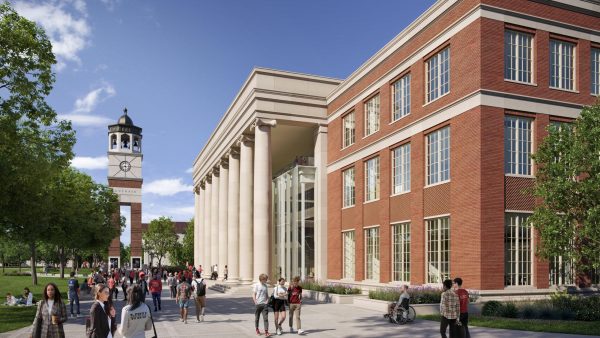
Renderings are available online for the new space, and show a modern look, across from South Lawn.
“Creating a space where students have all they need to study, practice and engage with each other is critically important to us,” Evelyn Thrasher, interim dean of Gordon Ford College of Business, said.
The project is tentatively scheduled to be completed in Fall 2025, WKU said, with the intention to transform both undergraduate and graduate business education in the region.
The addition of the College of Business will add to the number of educational buildings further down the hill.
The funding of the new College of Business comes from funding approved by state legislatures in April 2022, providing $74.4 million from the 2022-2024 budget, WKU said.
“I think that it’s cool that there’s going to be something else at the bottom of the hill that’s similar to [the Commons],” Lahman said.
The renderings show the outside of the building to fit in with the rest of the buildings on campus, blending well, but the inside is very clean and modern, Lahman said.
The college itself is named after alumnus Gordon B. Ford, who gave the largest gift to the university in its history, thus the college will keep its title, WKU said.
CHERRY HALL RENOVATIONS
Cherry Hall is often the first academic building prospective or current students see when they come to campus, as it is a first stop on campus tours and holds history dating back to 1937.
Though the building is historic in its nature, it is in need of improvements in order to keep it usable for generations of Hilltoppers to come.
The Commonwealth of Kentucky authorized and provided funding for asset preservation which, when combined with other resources, adds up to $78 million, Russell said. $30 million of this funding was set aside to do renovation of Cherry Hall in the future.
As part of the master plan for campus, Cherry Hall was marked as one of the major educational classroom buildings on campus and “is in need of a full renovation,” Russell said. “So far, we haven’t had our vision meeting. We haven’t met with the colleges yet.”
Architects have provided the university with an assessment of improvements that will need to be done to Cherry Hall, including heating and air, wifi, lighting and modernizing things like the restrooms, Russell said.
Caboni explained that he cares deeply about preserving architecture that has been on campus for a while, due to the fact that it is not affordable to construct buildings with marble like they were in the past.
“So what is non-negotiable are the marble stairs that have had the steps worn away by 117 years of Hilltoppers walking up them,” Caboni said.
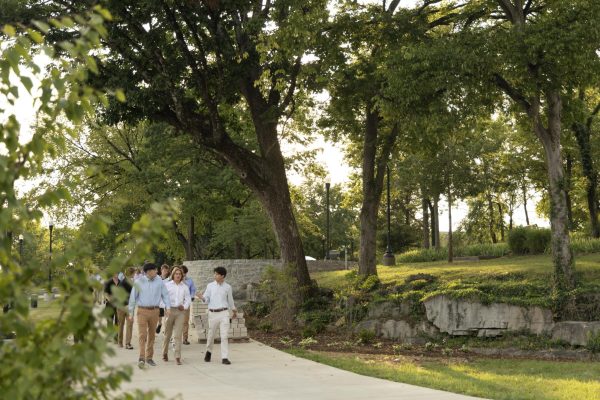
Since Cherry Hall is such a notable building on campus, it is the university administration’s priority to keep the integrity and history of the build- ing intact while doing renovations.
“This really is a reimagining of the interior space that makes it useful for another generation of Hilltoppers, but I’m also committed to ensuring that as much of the interior historic qualities of the building are retained,” he said.
GENERAL CAMPUS IMPROVEMENTS
There are many smaller projects that are also on the agenda of the 10 year master plan.
Students may have seen a section of State Street repaved, from the planetarium to the red wall in front of Raymond-Cravens Library, when they came back for this semester, Russell said. Additionally, there was a section of road behind Cherry Hall that was repaved as well.
Some buildings around campus, like Jody Richards Hall, received maintenance in the summer months, with a re-roofing of the building for about $1 million, Russell said.
Another aspect of campus that has seen some improvements have been the addition of a new locker room
for the women’s soccer and softball teams.
The locker room is not yet completed and athletes have yet not seen it, Lillie-Anne Mulligan, associate director of athletic media relations and communications said. There will be a full ribbon cutting ceremony for the building once it is fully finished, Mulligan said.
Russell explained that before the construction of this locker room, female athletes had to get ready for games and practices off site, then go to the facility.
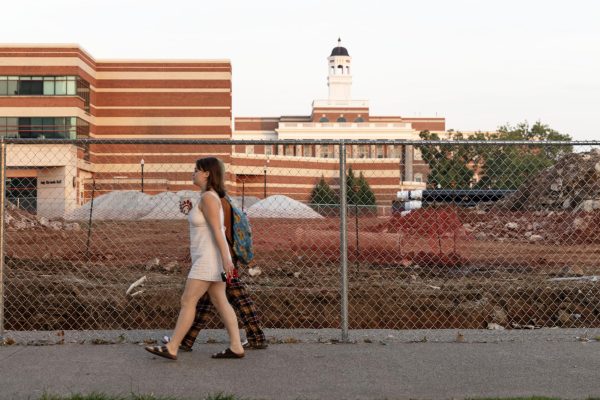
“This is going to be a big improvement for those two programs, which they deserve,” Russell said.
In addition to locker rooms, the athletic department has seen more improvements, like recoating the tennis courts, which is a $60,000 project, Russell said. There is also the potential to have a Hilltopper Field House, which will house the marching band, forensics team and e-sports.
Russell said they have been working on concepts and ideas for this space, but there is no official plan released yet.
The Campus Master Plan states that the main goals for the construction and renovations on campus are to overall “reinforce and celebrate the strengths of campus today,” “accelerate campus community through open spaces” and to “manage program growth through optimized space.”
Some students, like Katarina Johnson, a senior theater major, have conflicting opinions on the construction that is occurring on campus.
“… I’ve been in so many classes where there’s been construction being done right outside the walls of the building we’re in,” Johnson said. “… I’ve seen professors get clearly very upset with the fact that they have to talk over the sound of a jackhammer while they’re teaching.”
Johnson explained that the lack of parking on cam- pus is another issue that frustrated her. “… I know a lot of commuter students who can’t get parking on campus … there’s limited parking, where there could be parking is where we put all these green spaces.”
Russell said that the majority of smaller projects on campus are completed when students are not on campus, so there should be no major disruptions to student life on the Hill. While the College of Business will be under construction until roughly summer 2025, South Lawn will still be accessible, Russell said.
Content editor Molly Dobberstein can be reached at [email protected].
